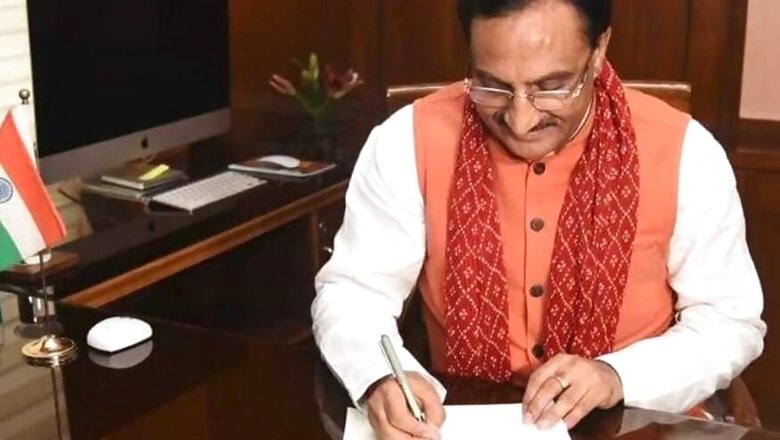
views
New Delhi: The Human Resource Development Minister Ramesh Pokhriyal ‘Nishank’ has stressed on creation of at least two Sanskrit-speaking near the central institutes promoting and preserving the language.
On June 13, Pokhriyal chaired a meeting with the heads of 11 institutions of Indian languages – Sanskrit, Hindi, Tamil, Classical, Hindi and Urdu. He stressed on the importance of promoting Sanskrit and said that highly qualified Sanskrit teachers/professors must be engaged to give new dimensions to the language both at the national and international level.
The HRD minister also urged the heads of central language institutions to discover innovative ways for the promotion of the language.
The heads of various Sanskrit-speaking institutes are upbeat about the idea. PN Shastry, vice-chancellor of Rashtriya Sanskrit Sansthan, said the idea needs to be pursued in a time bound manner with proper planning and identification of the villages. “We have to pursue this idea in a time-bound manner. If we start now we can achieve 100 such villages in five years where people speak Sanskrit. The language is studied by those pursuing correspondence courses here in the cities but the language is not in villages,” Shastry said.
By taking the language to the villages, even illiterate people can learn the language which is rich in traditions, Shastry said. “The cities have people from diverse backgrounds so it is not easy to implement this idea in a city. But we can comfortably work on this proposal in villages. Even if people there are illiterate they can learn the language from trained teachers. The idea is also important in the light of the vision where we hope to become a village-centered society,” he added.
Professor Ramesh Kumar Pandey, vice-chancellor of Shri Lal Bahadur Shastri Rashtriya Sanskrit Vidyapeeth, the Academic Council will hold a meeting when new session begins after summer vacations and the teachers will set out to identify villages that can be turned into Sanskrit-speaking villages.
“Sanskrit is an ancient language but it is not in practice. If people speak the language they will reflect its values in their behaviour. A language is kept alive when it is spoken, and speaking is an important part of its promotion and preservation. Our ancient literature in Sanskrit is a repository of values,” said Pandey.
The Rashtriya Sanskrit Sansthan, Lal Bahadur Shastri Rashtriya Sanskrit Vidyapeetha in Delhi and the Rashtriya Sanskrit Vidyapeetha in Tirupati are the three central institutes promoting the more than 3,500-year-old language. The Rashtriya Sanskrit Sansthan has 13 campuses and state governments have their respective institutes.
The heads of Sanskrit institutes said that Sanskrit is already popular in villages like Mattur, Hosahalli in Karnataka, Jhiri and Mohad in Madhya Pradesh and Sasana in Orissa, and people here converse in the language and encourage visitors to do the same.
The renewed emphasis on Sanskrit will now give direction to the existing idea, they said.
The recently submitted New Education Policy 2019 draft has made several recommendations on encouraging literature in Indian and classical languages.
The committee, headed by K Kasturirangan, has recommended that “Sanskrit be offered at all levels of school and higher education as one of the optional languages on par with all Schedule 8 languages. Sanskrit textbooks at the Foundational and Middle school level may be rewritten in Simple Standard Sanskrit (SSS) in order to teach Sanskrit through Sanskrit (STS) and make its study truly enjoyable.”
















Comments
0 comment